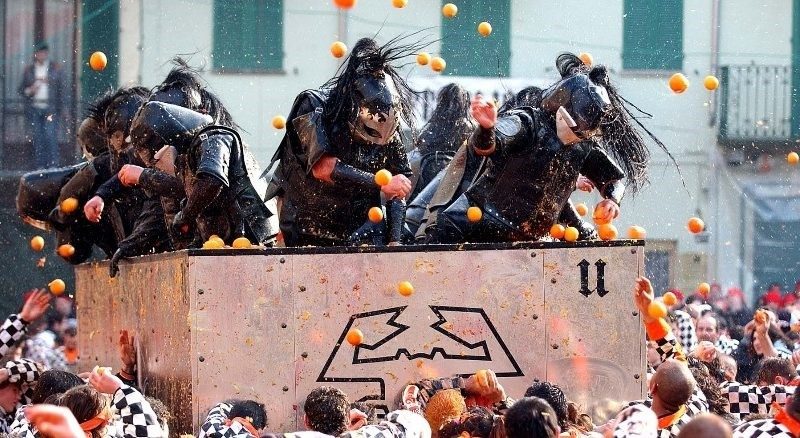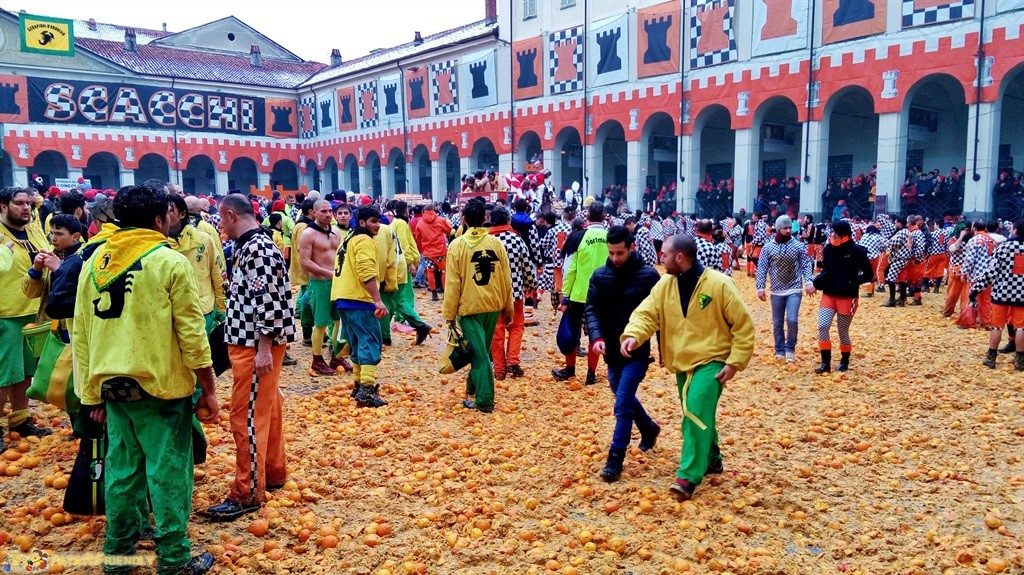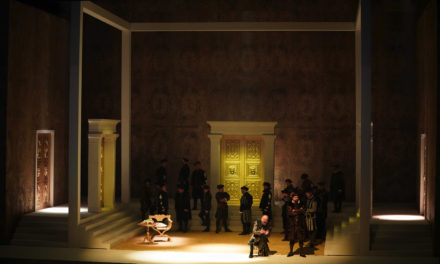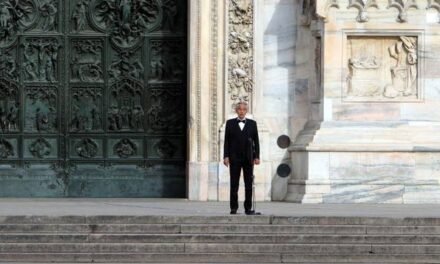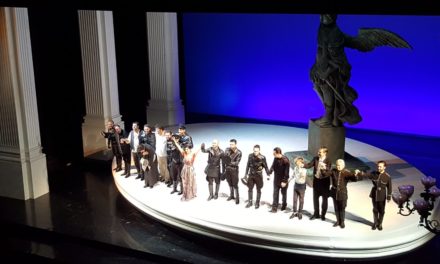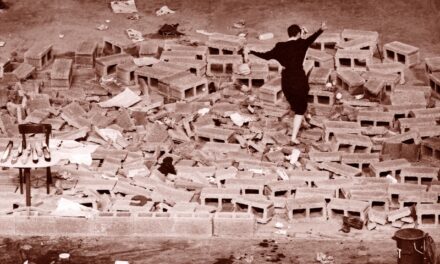Each year the town of Ivrea, in Piedmont, hosts a traditional celebration of Carnival with many historical implications. The official denomination “Historical Carnival of Ivrea” is due to the celebration’s evocation of events that occurred during the Medieval and Napoleonic periods, and also during the Italian Risorgimento, to underline the popular rebellion against tyranny and the triumph of freedom. The great procession in the main streets of Ivrea presents a wide range of characters, connected to the civic life of the town over the centuries: the podestà (usually a chief magistrate or local administrator), the chancellor, the general, the officers, the soldiers, the sutlers (civilian sellers of provisions to soldiers), accompanied by many musicians. The main character is the miller’s daughter, a young woman who symbolizes feminine dignity and courage; she wears a simple white dress and a red cap (the so-called Phrygian Hat), as a symbolic support to the rebellion against the oppression. The shape of this cap evokes those worn by the heroes of the French Revolution.
https://www.youtube.com/watch?v=MxURSbuIwO0%20
The Carnival of Ivrea culminates in the traditional “Battle of the Oranges”: it attracts millions of visitors and is one of the most original food fights in Europe. In ancient times, other fruits and vegetables, such as beans and apples, were used. The choice to use oranges is singular, because they are not a local crop: they are imported from Sicily and Calabria. Each year many tons of oranges are used (but they are not edible and are recycled as fertilizer for farms).
There are two categories of fighters: those on the chariots (representing the tyrant’s soldiers), and the pedestrians (representing the poor people in revolt). The aim of the Battle of the Oranges is to throw the wet fruit directly at the faces of the fighters on the chariots, to pulp them. The juice evokes the blood of the people shed during the rebellions.
There are 50 chariot teams, with different historical names and corporative colors and representing different regions of the town, and about 4,000 pedestrians. Each chariot holds about 10 fighters, who wear body armor and special masks similar to medieval military equipment. The pedestrians – in nine teams – have no form of protection; they represent the undefended and humble people in search of freedom. In all editions of the Carnival of Ivrea, a special jury declares the winning team of the Battle of the Oranges, based on the style of the fighters and their loyalty during the competition.
Also, local residents and tourists can wear the red caps, thereby enhancing the ceremony’s visual impact. It is a sort of technical recommendation, too: the fighters are ordered to respect and to avoid them during the Battle of the Oranges.
The Carnival of Ivrea is an occasion for fun but also a lively way to remember some important historical events. With its simulation of the contrasts between the soldiers of a noble despot and the poor people, the Battle of the Oranges is a traditional ceremony with a deep civic value. This suggestion is enhanced by the images of the urban location after the battle, with the pulpy oranges and their allegorical meaning.
This post was written by the author in their personal capacity.The opinions expressed in this article are the author’s own and do not reflect the view of The Theatre Times, their staff or collaborators.
This post was written by Maria Pia Pagani.
The views expressed here belong to the author and do not necessarily reflect our views and opinions.

